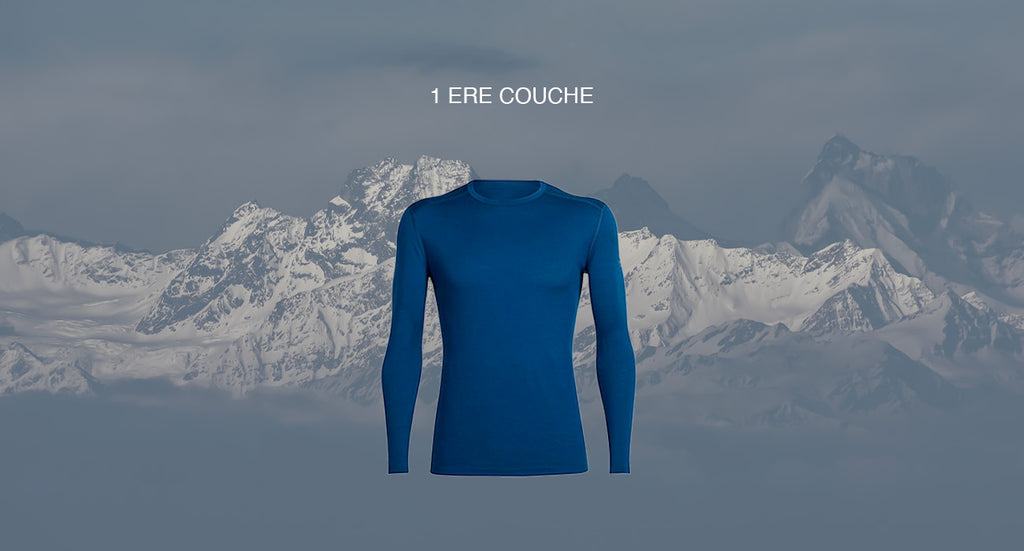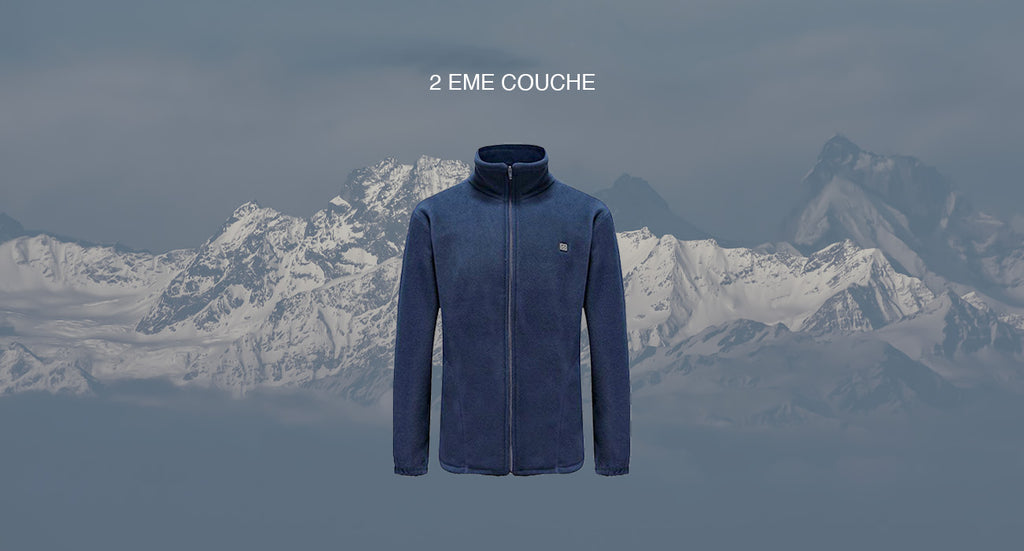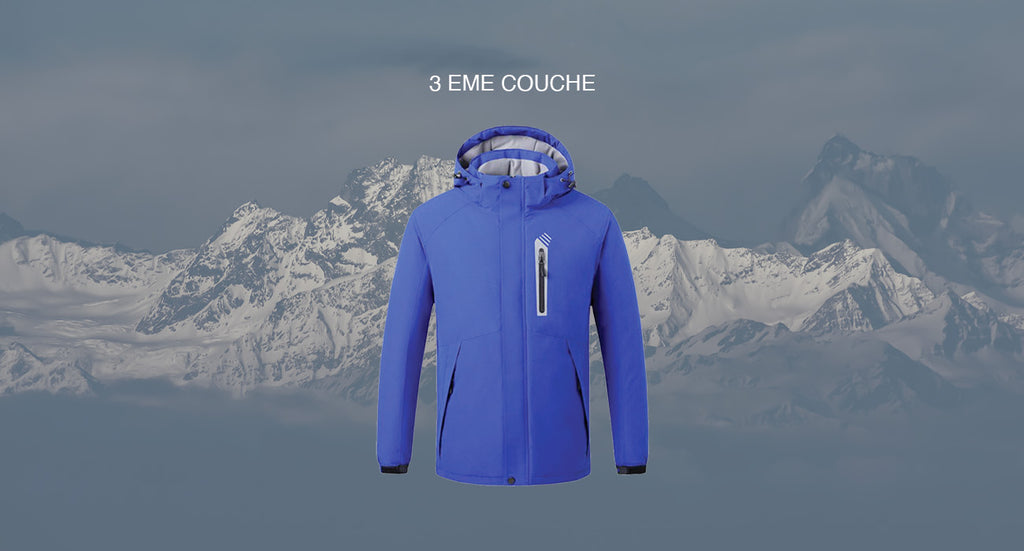
How to Choose the Right Clothing for Winter Sports
In the mountains, the weather is unpredictable, from bracing sunshine to frozen mists, the climate and temperatures vary enormously.
Also, to make matters worse, when you hit the slopes, you're hot and sweaty, and when you go up them, you get cold. These different temperature changes are not ideal for the body.
To get the winter season off to a good start, in this article we will see the most optimal outfit to adopt in order to enjoy winter without the discomfort of the cold and without the risk of falling ill.
How to choose your outfit for winter sports?
To hit the slopes, take advantage of the powder, and relax comfortably on the terrace, it is important to choose your winter clothing carefully. For this, certain elements must be considered in order to make your purchases.
To dress warmly in the mountains when winter is cold, you must adopt the principle of 3 layers of clothing .
Popularized by mountaineers and winter sportsmen facing extreme weather conditions, this technique has proven its worth.
1. A first layer of underwear to wick away perspiration

When you're working hard, your body will sweat. By evaporating on contact with the air, this perspiration will regulate your body temperature. However, when you wear clothes, this moisture will permeate the garment and you will get soaked. It is in fact important for this first layer, also called "second skin", to favor technical underwear . Wicking away perspiration in order to stay dry, this type of garment is breathable and is a real barrier against the cold. Generally made of Merino wool or synthetic material, these materials allow excellent thermal regulation for optimal comfort during your efforts.
For the practice of winter sports, the t-shirt is essential when the leggings are a personal choice. Depending on the climate and your sensitivity to cold, winter pants often consist of an insulating layer.
2. A second layer to insulate and retain heat

This must have a strong insulating power , this second layer, also called "intermediate layer", is there to protect from the cold. Studied and designed to retain body heat, it adapts to different climates.
- When the temperatures are not too cold, it can easily be transported in a backpack. Later, if the weather changes or your sports activity ends, you can put it on to protect yourself.
- In the case of an outside temperature close to zero, a fleece jacket and its stretch cut will be ideal. Built with a flexible structure, it provides maximum ease to leave you free to move.
- For temperatures below zero degrees, you will need to choose a heated fleece . Light and thin, it benefits from an integrated heating system which provides great insulation against the cold. Activate or deactivate at your convenience, it is like a traditional fleece designed with water- repellent materials and a great ability to wick away moisture . Nevertheless, its ability to heat up allows it to withstand negative temperatures, providing maximum heat.
3. A third waterproof layer to resist bad weather

For this last layer, it is equipped with a waterproof Gore-Tex membrane to brave the outdoor elements in all weathers.
In order to be effective, to ski or practice snowshoeing in the best conditions, this ski jacket must integrate various elements.
First, it must have great breathability in order to evacuate moisture;
In addition, if possible, it must have heat-sealed seams to prevent water or wind from seeping inside the garment;
Finally, it must be equipped with adjustable cuffs, stretch sleeves as well as a "snow guard" skirt, to prevent it from entering the coat. At Climb Winter, the coats are specially constructed to maximize their lightness and comfort in order to offer athletes a third layer of unequaled comfort. Like fleeces, the lining incorporates heating membranes that offer adjustable heat at the convenience of its user. Optimal protection against the cold, these are waterproof heated jackets ideal for winter sports.
At the level of the legs, these being less sensitive to the cold and less prone to perspiration, there is no point in having 3 layers of clothing. Ski pants are designed to incorporate warmth. This therefore means that they cumulate the second as well as the third layer together.
Nevertheless, the model and the cut of the ski pants will vary according to the discipline practiced.
On a groomed track, the pants will have more padding to cushion falls.
Off-piste, in powder snow, men's and women's ski pants will be equipped with suspenders and snow guards at the ankles to prevent snow from entering them.
If you are a chilly person, you can opt for leggings or tights as a first layer. If this is not the case, this technical garment will not be necessary.
How to protect your extremities when practicing winter sports?
To hurtle down the powder slopes, it is important to adopt the right jacket and pants, but not only. It goes beyond these elements, the extremities are also to be protected decently.
Whether the weather is good or not, the hands are parts that must be protected. Indeed, in order to keep its internal temperature at 37°C, the body will focus its energy on vital organs such as the heart, brain or lungs. In fact, in cold weather, the blood flow to the extremities will decrease, or even stop in extreme cases. This is why it is possible to feel tingling in the fingers, to have frostbite or even frostbite. Since the fingers are no longer irrigated with blood, they can begin to necrotize.
This is why it is very important to correctly select your gloves for the practice of winter sports.
Choose your gloves for the practice of winter sports

Providing protection against the cold and offering comfort, gloves are essential for practicing sports in winter. Allowing you to maintain excellent dexterity, this is necessary to hold your poles or to put on your shoes.
Generally, there are three forms of gloves for skiing, mittens, traditional gloves and lobster gloves.
- The mitt has the advantage of bringing the fingers together inside, which maximizes warmth. However, it does not provide good mobility.
- Traditional gloves offer good hand dexterity, useful for closing a helmet or handling sticks.
- Finally the Lobsters are the marriage of the mitten and the glove. The thumb and index finger are insulated, which allows for more mobility than with a mitten.
- Finally, there are heated gloves . Taking the form of a traditional glove, they incorporate heating technology. Allowing you to gain in dexterity and mobility while providing more protection from the cold, these models are greatly appreciated by those who are chilly as well as by athletes who want THE perfect pair. Specialized in the design of the latter, Climb Winter offers a wide range of heated gloves studied for the exercise of winter sports.
Choose your hat for winter sports

Since the head is responsible for approximately 30% of heat loss, it is important to protect it correctly from the cold.
In order to cover it, there is of course the cap , but also the hood which will protect the whole face. Ideal for winter sports, the ski beanie helps insulate the ears from freezing temperatures while finalizing your look.
Just as sensitive, it's also important to protect your neck and chin with a buff , choker, or scarf . Very sensitive to the cold, these accessories are to be worn in addition to the collar of your jacket when the outside temperatures are freezing.
Choosing socks for winter sports

At the level of the feet, you will have to choose technical ski socks to protect you effectively from the cold.
These should be adjusted by being neither too loose nor too tight. To put them on, never stack two pairs of socks on top of each other as this tends to cut off blood circulation, which should be avoided to resist the cold.
Finally, before putting on your shoes, it is necessary to check that they are completely dry so as not to soak your socks. In cold weather, humidity should be avoided as it will cool the body.
In your shoes, it is possible to place heated insoles in order to improve comfort by warming your toes.
You now know how to choose your outfit correctly to take full advantage of your ski outings. Don't forget to bring a pair of ski goggles or ski goggles , as well as lip balm and sunscreen . Slipped into your backpack, you'll be ready to hit the slopes without fear of getting sick from winter temperatures.


